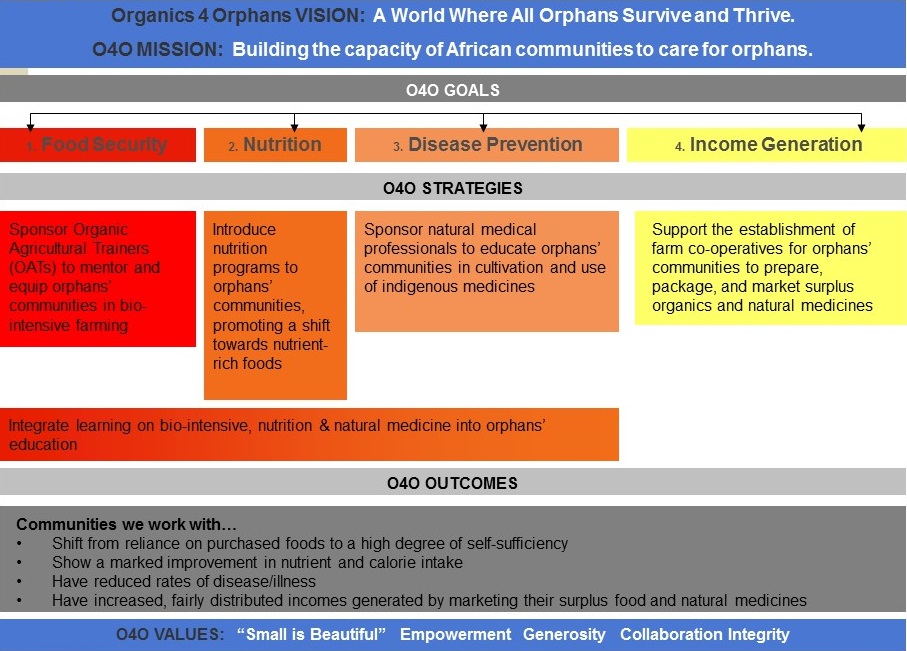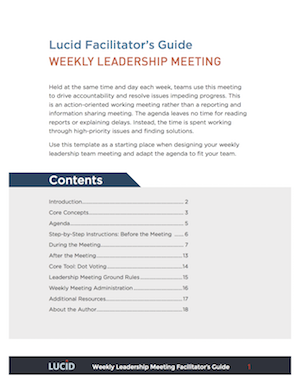Strategic Planning with Remote Teams Part 3: Crafting the Vision and Mission Statements

This post is the third in a series. You can find the whole series in our Complete Toolkit for Strategic Planning with Remote Teams.
Have you ever tried strategic planning without first getting your vision and mission right? What did you find?
If you were a small, cohesive group, maybe you breezed through goal-setting based on complete unity. It happens, but it’s rare.
For everyone else, here’s what typically happens:
- You generate ho hum goals: goals that just don’t stretch the team.
- It sometimes feels like you’re writing a to-do list, rather than a strategic plan.
- You sign-on for strategies that are far-removed from what you see as your core business.
In short, strategic planning takes far too long and feels anything but strategic. You look at the end result and fear you’ve created a Frankenstein: pieces from here, pieces from there, with no final coherence.
And the challenges don’t end at strategy. Teams that operate without vision and mission feel the effects everywhere.
How? Here are some everyday signs you need a vision and mission:
- Your branding feels disjointed or superficial.
- People outside don’t get what you’re all about.
- People inside don’t see their work as meaningful.
- You zig and zag to meet opportunity, but you get no closer to your dream.
If a vision and mission are this important, why would anyone skip it?
First, we’re all pressed for time. Vision and mission sometimes feel like the extras we’ll get to when we have space to breathe…or when we hold our next retreat.
Second, we make assumptions. Many teams believe they’re on the same page when it comes to where they’re going, but when they sit down to plan strategically, the gaps become glaringly evident.
Finally, we misunderstand the value of having relevant, vivid, fully thought out vision and mission statements.
Let me clarify.
Why Vision and Mission Matter
Vision and mission matter for three big reasons:
- They force you to get clear on where you’re headed in the long-term, and how you’ll get there. This clarity is the starting place for strategic planning.
- Vision and mission let you make smart decisions on-the-fly. Because, let’s face it: your strategic plan cannot possibly predict every opportunity and risk. When you need to pivot without getting lost, you look to your vision and mission.
- These simple statements help define your brand.
Important stuff, right?
So, what are vision and mission statements?
Let’s start by what they’re not. Vision and mission are not slogans. A slogan is intended for the people you serve, and while the vision and mission inform branding, they’re much more fundamental.
If a slogan is like painting your house, the vision and mission are like building the foundation. So, let’s get down to definitions.
Your vision captures an image of the future that you wish to create. In other words, it:
- Articulates the dream; the big aspirations driving the day-to-day work;
- Defines what sets you apart;
- Focuses on the impact of your work.
Your mission definitively states what you do, for who, and where. The mission:
- Conveys how you’ll achieve your vision;
- Guides where you choose to play, and where you don’t;
- Sets expectations so that people inside and out know what you’re all about.
Vision and mission do a lot of heavy lifting, ideally in a handful of concise, memorable words. But let’s get more specific.
How Vision and Mission Work in Practice
Unless you’re Google, chances are your vision and mission won’t be well-known. And it doesn’t matter.
The point of these pillar statements isn’t to draw attention; the point is for the vision and mission to guide every level of strategy, right down to customer experience. That’s how the people you serve are affected, even if they don’t know it.
Imagine a product design department sitting down to brainstorm new features. Now, imagine they come to a head; there are differing points of view. What should they do? Well, if they’re acting strategically, they refer back to their strategic plan. They take a look at their department goals, and they ask, ‘Which option will best deliver on this goal?’
When strategy is done right, you can trace a direct line from every single goal back to the vision and mission. It’s all aligned.
Curious how this kind of planning works? Check out the full set of agendas I’ve created with Lucid Meetings and you’ll see exactly how the pieces fit together. (Tip: if you’re a subscriber, you have complete access to the agendas and a guide.)
Who Needs a Vision and Mission?
You may well be wondering, is now the right time for us? Are we ready for a vision and mission?
Or maybe you have a legacy vision and mission, and you’re wondering if now is the right time for a refresh.
The short answer is yes, now’s the time. Vision and mission are like shoes. You always need a pair, and given enough time, you’ll always wear them out.
For startups, it might seem too soon to put up your placard. Sure, you want room to evolve, but ostensibly, you’re doing this work because you have a dream and something unique to offer. That’s the crux of a vision and mission.
As you mature, the reasons change, but you always need a relevant vision and mission.
Improve Your Skills with Meeting School
A Case Study: From Startup to Maturity
Take a not-for-profit I’ve worked with, for example.
Organics 4 Orphans (O4O) started less than ten years ago as a program, under another NFP’s umbrella. At that time, we wrote a vision and mission at a coffee table – just the founders and I.
The statements were deeply personal reflections of what they wanted to achieve, and for practical purposes, the vision and mission were a means to raise funds. These two simple statements quickly conveyed the program’s niche, its focus and desired outcomes.
That first iteration worked: O4O slapped the vision and mission onto the first page of a strategic plan and showed logical links to the goals and strategies. Funders loved it.

Organics for Orphans Case Study: Goals, Strategies & Outcomes
Since then, O4O has changed, big time. It has stepped out on its own, and has a view to global impact.
Recently, the founders have decided to shift out of direct management. It’s a sensitive time. During this flux, it would be easy for the team to lose sight of where they’re going, why, and how. They need the vision and mission for alignment – especially because they’re distributed across continents.
Now, more than ever, O4O’s vision and mission are due for a re-fresh.
Even as they outgrew their original statements, the founders kept the team on track through a lot of verbal communication; they were constantly sharing messages about the changing vision and mission.
Now, as they take a step back from operations, the founders need to enshrine that vision and mission in writing. To use the metaphor from Elise’s post, it’s like they’re leaving a map for the others to follow.
Sure, that map will become outdated in time. How long the new vision and mission will stay relevant, we don’t know; it depends on the pace of change.
We don’t wait until no new roads are being built to make a map, and we don’t wait until conditions are static to create a vision and mission.
Now, if O4O were to shed its flat structure and adopt more specialized roles, the vision and mission would again play a new role. Where there’s a hierarchy, vision and mission bring clarity in the midst of complexity, and help people understand how the little pieces add up to something worthwhile.
At each stage of an organization’s development, these statements are critical.
How To Get Started
There was a time when we just wouldn’t do vision and mission remotely. Thankfully, attitudes and technologies have evolved. It’s now possible to take this work online.
That said, there are challenges.
People don’t often know how to map an in-person process to a virtual experience. We take away the sticky-notes, the white boards, the breakout groups, and where are we left?
These are the questions I worked through with Lucid Meetings. We translated the vision and mission workshop experience into a fully virtual process, so that you don’t have to.
Check out the full set of agendas and instructions for strategic planning with remote teams.
I know of no easier, more effective way for distributed teams to reap all of the benefits of strategic planning, while virtual. Every agenda is completely integrated with the Lucid Meetings platform; the online space becomes like your workshop room. It’s where everything you need resides.
All the Best,
Anna O’Byrne
Upstream Meetings
Ready to dive in? Read other posts in this series, download meeting agendas, and get the meeting templates here.
The next post in this series: How to Define Organizational Values



